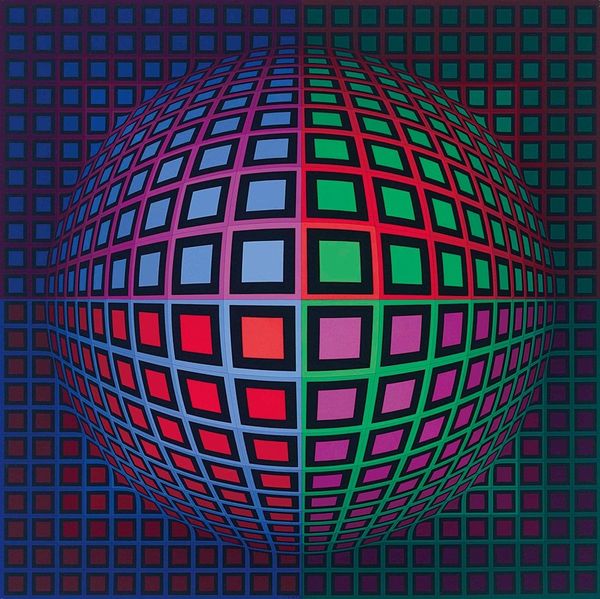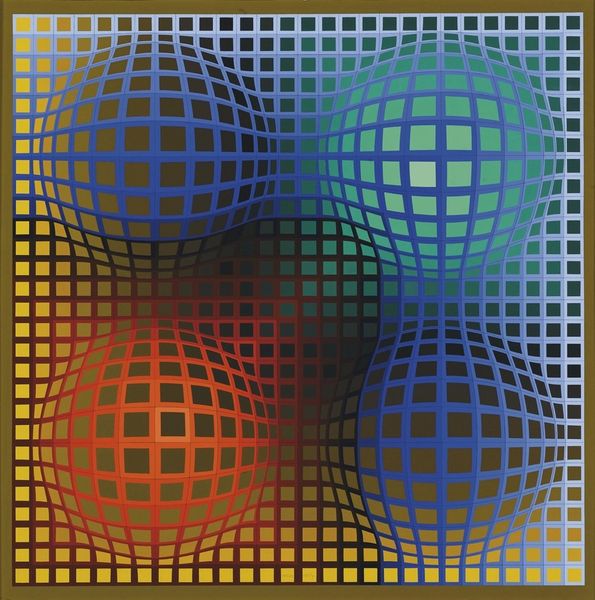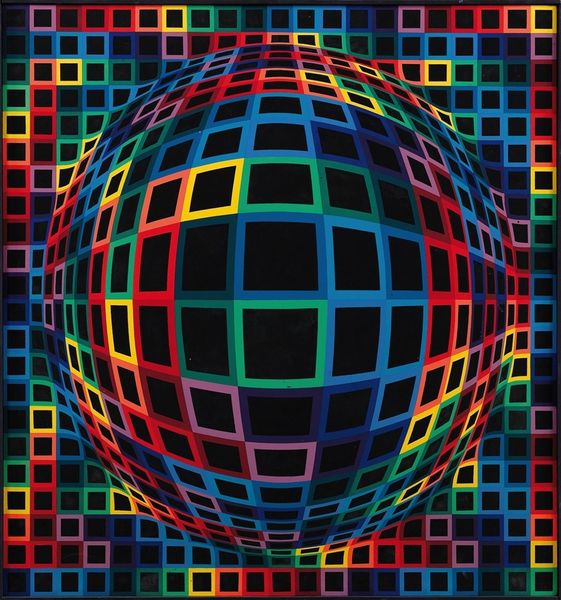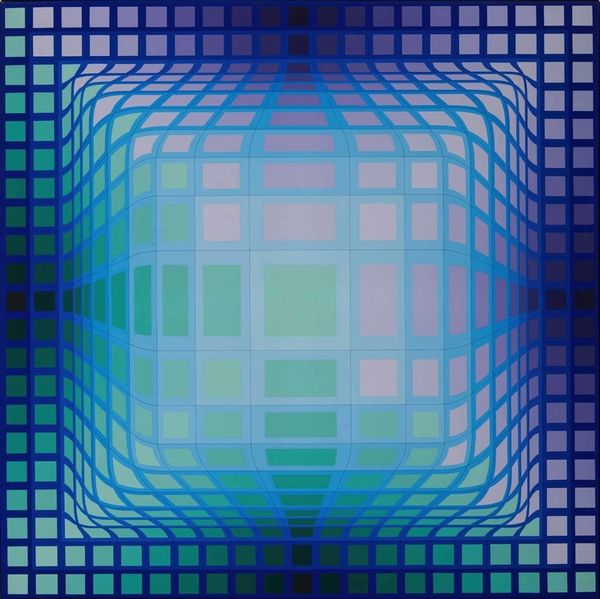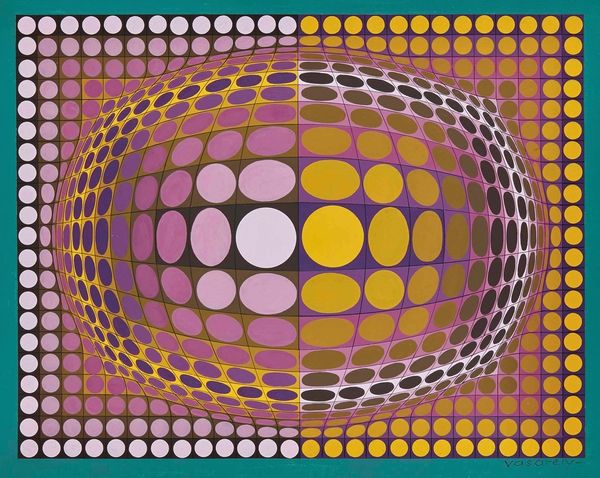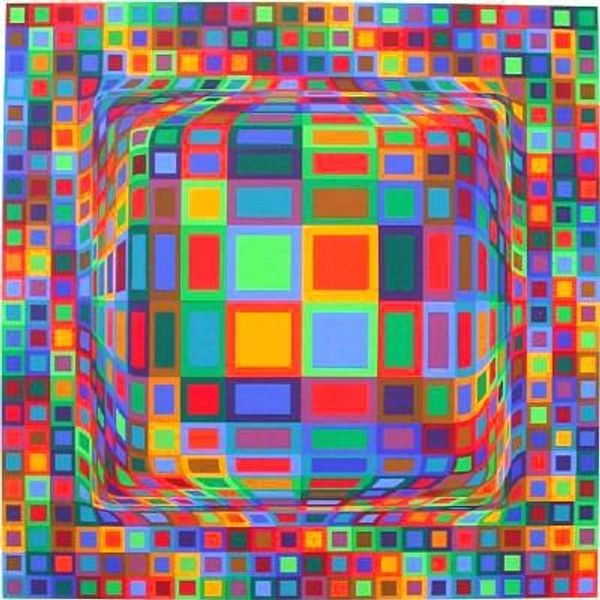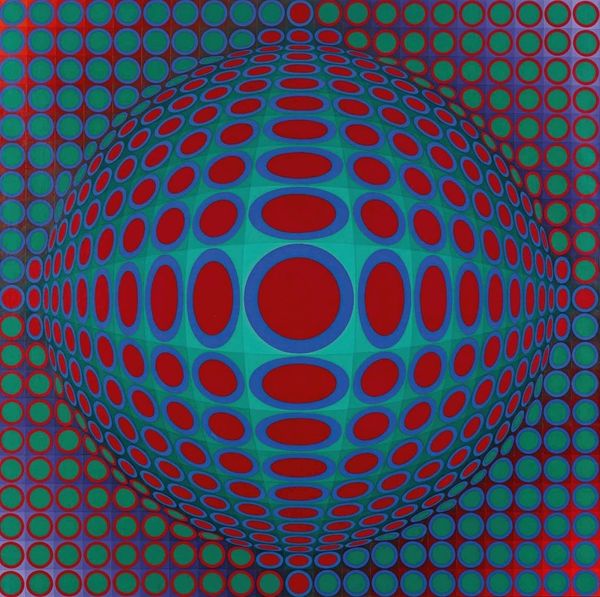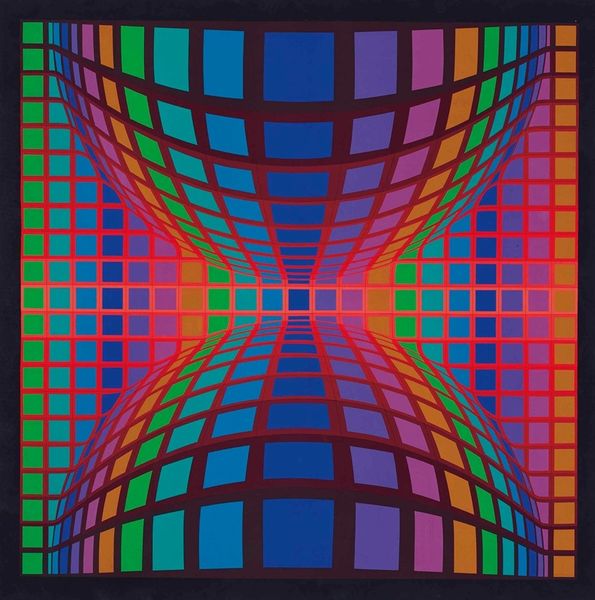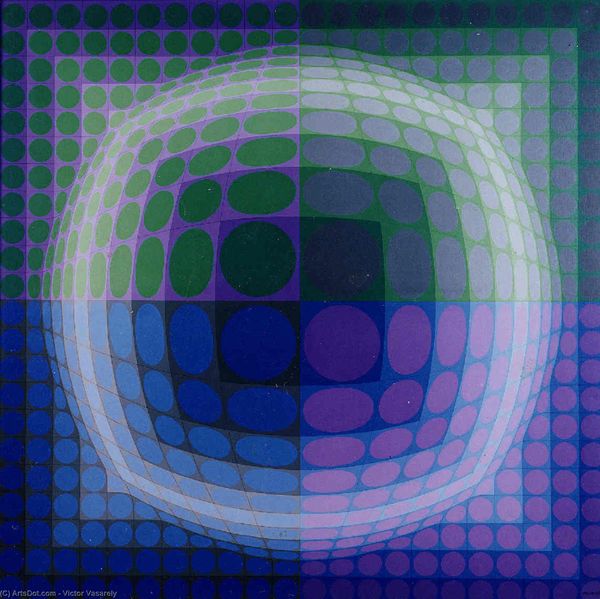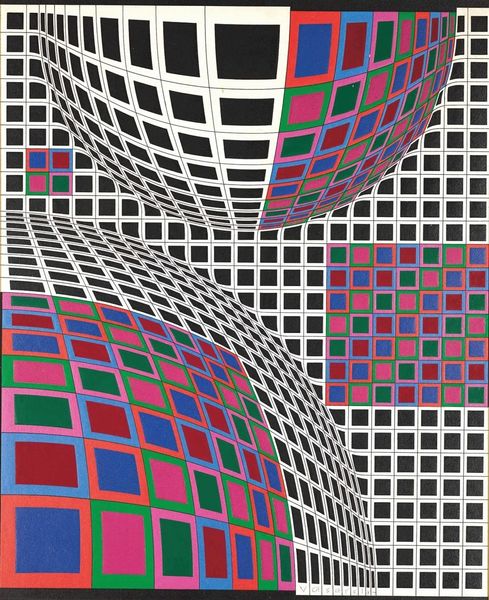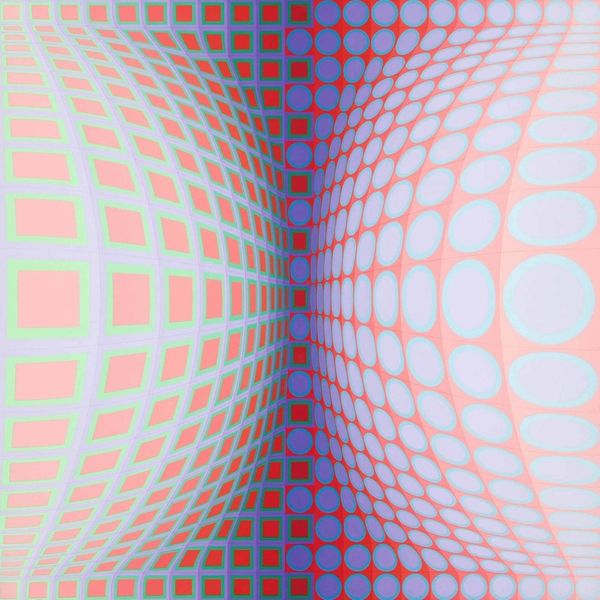
acrylic-paint
#
op-art
#
pattern
#
colour-field-painting
#
acrylic-paint
#
geometric pattern
#
abstract pattern
#
minimal pattern
#
geometric
#
geometric-abstraction
#
abstraction
#
pop-art
#
line
Dimensions: 200 x 200 cm
Copyright: Victor Vasarely,Fair Use
Curator: Here we have Victor Vasarely's "Vega-Nor" from 1969, an acrylic on canvas. What strikes you most immediately about it? Editor: It feels like staring into a very stylish, geometric black hole. The way the grid bends and curves is unnerving yet beautiful, and kind of makes me want to reorganize my closet. Curator: Precisely! Vasarely’s work hinges on the disruption of the stable Cartesian grid. Observe how he manipulates color and form, presenting a convex distortion on a flat plane. It’s an exploration of optical illusion and perceptual experience, wouldn't you agree? Editor: Totally! It's playful, too. Like he’s saying, "Hey, reality's bendy, have some fun with it." The color choices, though deliberate, give off this groovy, late 60s vibe, too, despite the intense precision. Curator: His methodology involved rigorous preliminary sketches and mathematical calculations. Semiotics play a crucial role; each square acts as a signifier, contributing to the overall illusion of spatial depth and movement. Note the colour relationships. How do they influence depth perception? Editor: For me, it’s about the contrast; like how the vibrant reds and yellows fight against the cooler blues and greens. This tension keeps the eye dancing around, never quite settling, which amplifies the whole bending illusion, wouldn't you say? The title, "Vega-Nor", feels space age, and brings a level of abstraction to it all. Curator: Indeed, abstraction here enables Vasarely to achieve universality, an objective visual language as he called it. The interplay between figure and ground challenges our visual assumptions. Editor: You're right. It does makes you question what's real. This makes me wonder, did he ever get dizzy looking at his own art? Because I sure would. Curator: It's a potent reminder that perception itself is constructed. Editor: Well, I'm now seeing my world as a bendy, psychedelic grid and my perception of reality has definitely been tweaked. Curator: That is, perhaps, the ultimate goal of Op Art: a transformation of vision.
Comments
No comments
Be the first to comment and join the conversation on the ultimate creative platform.
